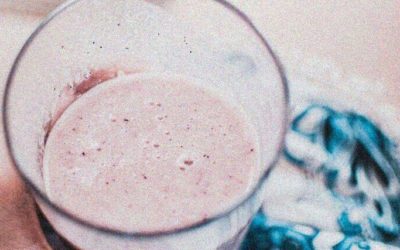POV: it’s about that time of the month and your body decides to remind you with a swift kick to the abdomen. Or even worse… you get hit with the dreaded butt cramp. But, in all seriousness, understanding your period and finding what works for you is one of the most important things you can do for your menstrual health.
And while it’s true that we all experience a different range of period symptoms, one thing we all can agree on is that period pain sucks and that we would love nothing more than to banish it from the face of the Earth. But, until that happens, here are some tips that might help…
eat wholesome foods
Knowing what to eat can significantly affect the symptoms you experience before, during, and after your period. Certain foods can actually worsen common symptoms like fatigue, bloating, fluid retention, and cramps. So it’s important to reduce triggering foods and enjoy more whole foods (not to be confused with Whole Foods) to help keep energy levels up and keep hormones balanced out.
Now, we know that there are a lot of us that experience crazy period cravings each month, but before you dip that Taki in nacho cheese, remember that ‘good food is a good mood,’ so try to keep it wholesome. Here are some of our fave period-friendly eating tips:
- Add more fruits and leafy green vegetables into your routine (a green smoothie is a great option to reduce sugar cravings).
- Cut back on gluten, dairy, and fried food (aka inflammatory foods).
- Eat plenty of foods rich in Calcium and Omega-3, such as plant oils, walnuts, chia seeds, hemp seeds, bananas (helps with cramps and fatigue).
- Indulge in dark chocolate with over 65% cocoa (high in Magnesium). Honestly, do we need to be convinced to eat more chocolate?
- Eat healthy fats such as avocado and flaxseed (because not all fats are bad).
stay hydrated
Of course, water is vital to our overall health and well-being, but drinking enough water, specifically during your period, can help minimize fatigue (which can be caused by dehydration). Fluid retention also typically worsens during this time of the month (hello, bloat), so adequate water intake can also help keep that in check.
Not to mention, dehydration can also worsen cramps and trigger headaches and migraines. So, give your kidneys a helping hand and start chugging.
Plain water not your thing? It’s okay, we got you. Here are a few alternatives we love for those times when Fiji just isn’t cutting it:
- Herbal tea (peppermint, chamomile, lemon balm)
- Lemon water
- Sparkling water
- Coconut water
- Decaf coffee or tea (SKIP the sugar)
You can also read about some of our favorite ways to kick up the water intake here.
avoid alcohol and caffeine
Okay, hear us out. If you’ve ever been on the receiving end of a hangover, you are well aware of how dehydrating alcohol can be. Well, that’s because it’s a diuretic which explains why we just can’t seem to stop peeing after a certain number of drinks. Not to mention, alcohol and headaches typically go hand-in-hand for many of us. And if that wasn’t enough to get you to drop the White Claw, studies have also found a correlation between alcohol and an increase in PMS symptoms in women.
Unfortunately, caffeine is no better. Some studies show that there may be a correlation between caffeine intake and the intensity of period cramps in some women. Not to mention, during a time of hormonal fluctuation, the addition of coffee can also potentially increase symptoms like fatigue, headaches, dehydration, and anxiety.
But, if you’re anything like us and would rather watch paint dry than decline a Starbucks run for iced coffee, here are a few alternatives that can help curb that craving:
- Matcha Green Tea Latte
- Chai Tea or Chai Latte
- Hot Chocolate
- Hot Cacao
- Turmeric Latte
- Herbal Tea
- Decaf Coffee
- Coffee Flavored Protein Shakes
turn up the heat… pack
Before you reach for that Tylenol, don’t sleep on the power of the heat pack. Studies show that hot water therapy can effectively block the pain signals sent up to our brains. Heat on your abdomen can also help the uterus muscles relax and increase blood flow.
Try placing a hot water bottle on your stomach or use a heat pack for approximately twenty minutes at a time. If you’re using a super warm heat pack, remember to wrap it in a towel or cloth before applying it directly to your body.
Or make a Target run and grab a chargeable or plug-in heating pad. As if we needed an excuse to go there anyway.
low-impact movement
Studies show that adding gentle and intuitive movement to your daily routine can be very beneficial for reducing period pain. Exercising releases endorphins (the feel-good chemicals in our brains). The bodily impact of endorphins can even rival some over-the-counter pain meds.
This doesn’t necessarily mean a full-blown workout sesh but making it a point to incorporate walking or other low-intensity exercises into your daily routine can make all the difference.
Yoga, especially, can be highly beneficial in relieving period cramps and bodily pain. Some specific poses such as child’s pose, reclined butterfly, and spinal twist can help relax your abdominal muscles and help relieve pain.
essential oils
Okay, we know this one sounds a bit left field, but let’s be real. There’s an essential oil for pretty much everything. And most of them smell pretty damn good. But aromatherapy is said to have tons of benefits, including stress relief, pain management, and even anxiety reduction.
If you struggle to sleep during your period, try adding a few drops of lavender oil to your pillow and let yourself melt right into your sheets. Or set the mood with a diffuser and envelop your senses in your favorite relaxing oil.
Recommended essentials oils for pain, cramps, and insomnia include:
- Lavender
- Cinnamon
- Clary Sage
- Roman Chamomile
- Clove
- Peppermint
track your cycle
Keeping a track of your cycle will not only make you aware of when to expect your period but can also help you gear up for it. And by that, we mean: creating a period emergency kit, drinking plenty of water, and eating well-balanced meals full of Magnesium (like bananas and avocados), Omega-3 (like chia seeds and salmon), and Calcium (like almonds and kale).
Also, keep an eye on symptoms such as your mood (did someone say PMS?), appetite, energy levels, and pain – there are tons of apps out there now that make this super easy. Prefer a pen and paper? Keep a period tracker in your diary if you prefer to journal; it is completely up to you.
Last but not least, don’t be too hard on yourself. It’s only natural to feel a bit off during this time of the month, but that doesn’t mean we have to suffer through it. Remember, we’ve got your back.














0 Comments